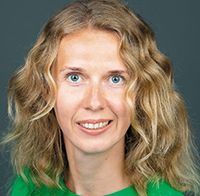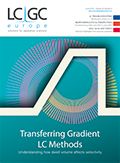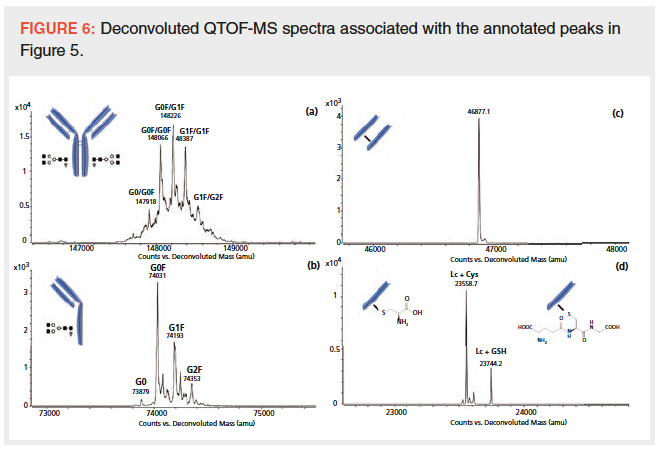Making Nontargeted Liquid Chromatography–High-Resolution Mass Spectrometry Analysis Quantitative
Anneli Kruve previews the topic of nontargeted liquid chromatography–high-resolution Mass spectrometry for HPLC 2019.
Targeted screening with liquid chromatography–mass spectrometry (LC–MS) has solidified its status in the field of analytical chemistry for research, industry, and legislative purposes. At the same time, the applicability of suspect and nontargeted screening is growing fast. Nontargeted analysis allows the detection of hundreds or thousands of features simultaneously; while classical targeted methods only allow the detection of previously selected compounds.
The most significant obstacles for nontargeted liquid chromatography with high-resolution mass spectrometry (LC–HRMS) screening at the moment are the scarcely defined scope of the method and, more importantly, the inability to provide quantitative information. This is well illustrated by the data. Currently, the Human Metabolome Database contains 114,100 compounds and only 3383 (<3%) of these have been both detected and quantified (1).
As a result of the intensive developments in the field of compound identification tools, the proportion of compounds that can be identified with nontargeted methods is constantly increasing. However, the inability to quantify these compounds is a problem not only in metabolomics, but also in pharmaceutical analysis, environmental analysis, and even in monitoring illegal substances.
The inability to provide quantitative data originates from the vastly different ionization efficiencies of different compounds in an electrospray ionization (ESI) source and, therefore, standard substances need to be used for quantification. The overall scale of ionization efficiencies covers six orders of magnitude in both ESI positive and negative mode (2). For example, even relatively similar compounds, such as the positional isomers 2- and 4-nitrophenol, yield a 40 times different response at equal concentrations (3).
Additionally, different LC conditions affect ionization efficiencies (4).
The answer to obtaining quantitative information lies in the prediction of ionization efficiencies of the identified compounds. Lately, we have measured more than 3000 ionization efficiency values in ESI positive mode and more than 1000 values in ESI negative mode. These measurements have been conducted in vastly different solvents (60 combinations); eluents with both methanol and acetonitrile with 0 to 100% content, pH range from 2.0 to 10.7 with all common LC–MS buffers, and seven different mass spectrometric instruments have been used. For the prediction, both the structure of the compound as well as the eluent characteristics are very important. Various descriptors of compounds, as well as empirical parameters of eluent, together with machine-learning algorithm help to predict the ionization efficiency.
Currently, the average prediction error of ionization efficiency is 2-times, which means that actual ionization efficiency is in the range of 0.5× predicted ionization efficiency to 2× predicted ionization efficiency. The accurate result obtained for ionization efficiency predictions has allowed the estimation of the concentration of compounds detected with LC–MS solely based on the measured peak areas and predicted ionization efficiency. This approach has been tested on the screening for food contaminants in cereal samples (positive mode) and metabolites in green tea samples (negative mode) with nontargeted LC–MS methods. Both analyses were performed in the gradient elution mode. In the cereal samples, the average prediction error was below 5-times. This means that if the pesticide concentration is estimated to be 1 ppm then it would actually be between 0.2 ppm and 5 ppm. For the metabolites the average prediction error was less than 2-times. For both samples the concentrations of the detected compounds ranged more than five orders of magnitude (10-8 to 10-4 M). These prediction errors take into account both the accuracy of predicting ionization efficiencies as well as ionization suppression.
It is important to note that quantification is not limited to future analysis, but can also be applied to the results of the nontargeted analysis conducted in the past. The metabolite samples were first analyzed in 2017 in one laboratory, where only some of the compounds could be quantified-because of the lack of standard substances, several important compounds could not be quantified at the time of analysis. Later, the ionization efficiencies were predicted to the detected metabolites and the concentrations could be assigned to all of the detected compounds. Therefore, standard substance-free quantitation can also be applied retrospectively.
The analysis can be performed for all kinds of LC–ESI-MS data. The only prerequisite is that some compounds for which the concentrations are available have been analyzed using the same conditions (eluent and instrument) as the compounds of interest. These compounds, used for transforming the ionization efficiency values to instrumentâspecific response factors, can be internal standards, quality control samples, or other analytes that have been quantified from the sample with the aid of standard substances.
In summary, predicting ionization efficiencies allows broader quantitative coverage of samples analyzed with LC–MS. The high accuracy in the predicted concentrations allows insight to be gained into chemical and biological processes, to estimate more accurately the condition of the environment, and to protect users from possible contaminants in food products. In addition, the quantitative analysis can be made retrospectively if some of the compounds in the samples have been confirmed and quantified with standard substances.
References
- D.S. Wishart et al., Nucleic Acids Res.46(Database issue), D608–D617 (2018).
- M. Oss, A. Kruve, K. Herodes, and I. Leito, Analytical Chemistry82(7), 2865–2872 (2010).
- A. Kruve, K. Kaupmees, J. Liigand, and I. Leito, Analytical Chemistry86(10), 4822–4830 (2014).
- R. Kostiainen and T.J. Kauppila, Journal of Chromatography A1216(4), 685–699 (2009).

Anneli Kruve graduated from the University of Tartu, in Tartu, Estonia, in 2011 and continued her career in academia. She conducted her postdoctoral studies in Professor Schechter’s group in Technion, Israel, and has conducted research stays in Freie Universität Berlin and the University of Helsinki. Currently, she is an associate professor at Stockholm University. Her field of studies is focused on mass spectrometry fundamentals and applications. Specifically, her group is working on ionization mechanisms, establishing semiquantitative nontargeted screening as well as method development and measurement science issues both in targeted as well as nontargeted methods.

Advances in Non-Targeted Analysis for PFAS in Environmental Matrices
March 27th 2025David Megson from Manchester Metropolitan University in Manchester, UK, spoke to LCGC International about the latest developments in non-targeted analysis (NTA) of per- and polyfluoroalkyl substances (PFAS) in environmental matrices based on a recent systematic review paper he has collaboratively published (1).
Study Explores Thin-Film Extraction of Biogenic Amines via HPLC-MS/MS
March 27th 2025Scientists from Tabriz University and the University of Tabriz explored cellulose acetate-UiO-66-COOH as an affordable coating sorbent for thin film extraction of biogenic amines from cheese and alcohol-free beverages using HPLC-MS/MS.
















